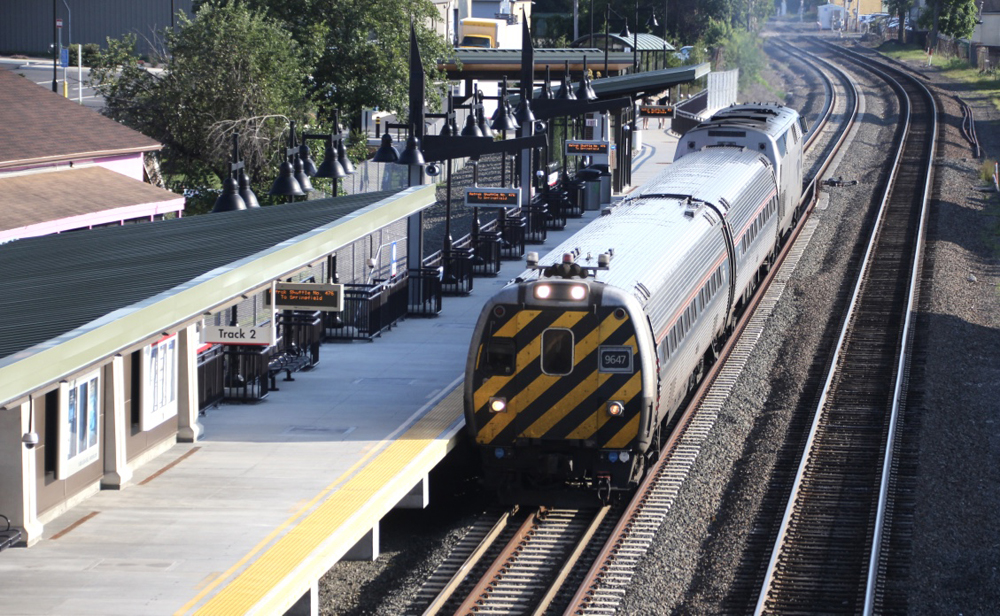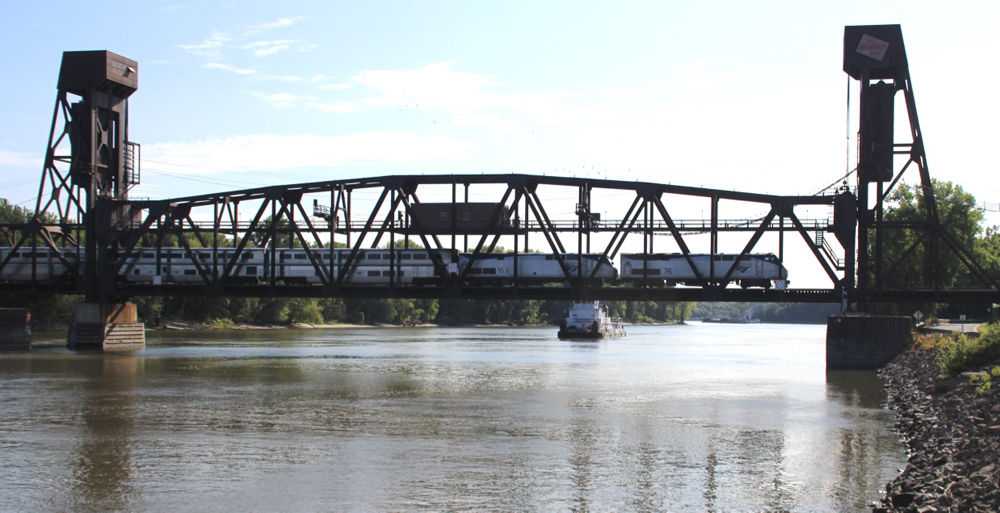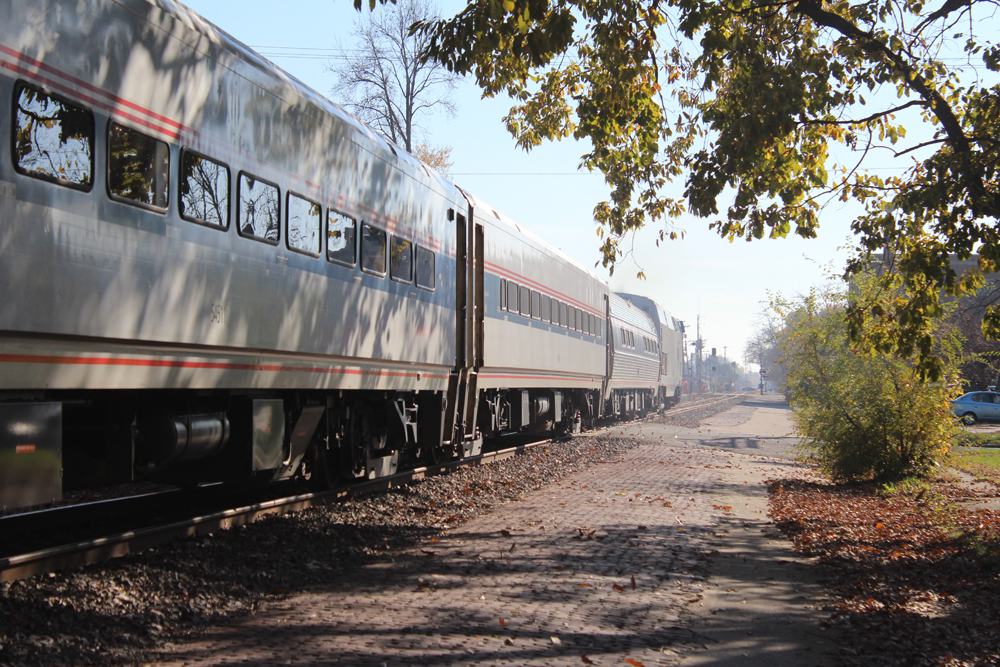
WASHINGTON — Amtrak has issued its two most consequential documents of the year, which show where management intends to take the company and what it would like from Congress to achieve those goals.
The 77-page General and Legislative Annual Report and Fiscal Year 2022 Grant Request, available here, asks Congress to almost double its pre-2020 annual grant to $3.88 billion “to offset the pandemic’s impacts on Amtrak and its state and commuter partners.” It seeks another $1.55 billion “in additional investment necessary to improve Northeast Corridor infrastructure and begin advancing new corridor routes across the nation.”
As the company had hinted in previous public statements, the major item on the legislative wish list would allow Amtrak to provide 100% of capital and operating costs for the first two years of operation of any new multi-frequency corridor. This would cushion the initial financial impact for states, which would then cover an escalating portion of those costs: at least 10% in the third year, 20% in the fourth, and 50% in the fifth. As of the sixth year, state operating authorities would then assume all costs, as allocated uniformly under Section 209 of the Passenger Rail Investment and Improvement Act. The rationale is that the service would generate enough annual revenue after five years to make continued operation attractive.
An unexpected addition is that “the proposed program could also support increases in service frequency for less-than-daily Long Distance routes [the Sunset Limited and Cardinal] and certain specific investments in corridor service”— e.g. new route segments in Canada or Mexico — at no long-term cost to Amtrak’s state partners. One improvement this might cover is customs pre-clearance for passengers at Montreal’s Central Station. Service to Mexico hasn’t been mentioned since the Inter-American was cut back from Laredo, Tex., to San Antonio in Amtrak’s first decade before it became the Texas Eagle.

The report says the funding at the requested levels “would support new long-distance passenger equipment to replace Superliners and Amfleet IIs.” Earlier in the month, the company tapped Siemens to replace Amfleet corridor equipment but would not say how it would configure the specified 83 trainsets until the final contracts are signed later this year [see “Digest: Amtrak selects Siemens …,” Trains News Wire, April 21, 2021]. It is apparent single-level Amfleet II coaches and cafés, now almost 40 years old, aren’t a part of the Siemens procurement.
On the legislative front, Amtrak is asking Congress to give it the right to sue host railroads that fail to provide dispatching preference for passenger trains, and to empower the Surface Transportation Board to determine whether additional trains on a given route “would unreasonably impair freight transportation.” This is essentially the battle Amtrak was confronted with when it asked Union Pacific in 2012 to operate the Sunset Limited daily; the UP said at the time that it would require $750 million in infrastructure upgrades to make that happen.
Other ambitious goals include asking legislators to establish an Intercity Passenger Rail Trust Fund, an idea first floated by Amtrak President W. Graham Claytor, Jr., in the 1980s; make Railroad Rehabilitation and Improvement Program loans easier to obtain; and allow states to spend a portion of their Highway Trust Fund money on passenger rail.
The 256-page Fiscal Year 2021 through 2026 Five-Year Plan outlines a strategy for each “asset line” and is available here. Trains News Wire will offer a closer examination of the five-year plan in the near future.














I just want Amtrak to keep running however they do it. Never had a problem with the roomette on Superliner but I am traveling alone and not a big person. I do not know how anyone could climb into the upper. I did take a Deluxe bedroom when I was on for 2 days on Builder and then transfer to Starlight , reminded me of the Pullman bedroom 2 friends and I took on UP years ago, but Amtrak had more room and the bathroom was larger too I would like to see the diners brought back, one of the pleasures of riding with my parents was meals in the diner. And they should be open to coach passengers too if they choose to eat there. We always traveled coach and could eat with Pullman passengers, they might get seated before we did, but we were all equals in the diner.
I would like to see new non-Northeast corridor equipment based on the Stadler FLIrt in long distance configurations. Currently commuter versions are running in Texrail service between Fort Worth and DFW without temporal separation from freight.
Staedler in Switzerland has build new bilevels for the Rockymountaineer. They should meet all North American safty requirements?
It could make sence to use that platform for Superliner replacements, doesn’t it?
Meanwhile, with the fracas going on between Amtrak, CSX, and NS for the establishment of two rts New Orleans-Mobile, it sure seems to this writer that the future for all other new starts or increases in frequencies on existing routes over the freight railroads looks pretty, pretty, bleak.
I have to wonder, if a serious search for such a builder was to commence, would Flynn, Gardner, Roger Harris, the marketing guy, and the Board stipulate not reproducing under any scenario the Economy Bedrooms, never big enough for two normal size/weight people, with that upper bed with no window and close to the ceiling. Been a long time since my wife and I traveled that way but I remember getting a panic attack it was so claustrophobic and coffin-like. And I’m only 5 feet, 107 lbs. The idiots who designed that accommodation and the Amtrak people who approved it clearly never planned to travel that way.
My wife and I found the economy bedroom perfectly adequate (I’m over 6 feet tall) . In my case I found it more spacious than the slumbercoach single rooms, an accomodation I wish was still feasible. I preferred the upper room.
Superliner I’s are 40 years old they need to be replaced first but where they will ever be able to find a builder to reproduce them I haven’t a clue.
surely the amfleet 2 cars and superliner cars should go through in an overhaul and they can last longer
“It is apparent single-level Amfleet ll coaches and cafes…aren’t part of the Siemens procurement”. So what are we to make of that? I am the furthest thing from a structural engineer but it seems with their stainless steel carbodies those cars could be refurbished cosmetically and structurally and be good for another 10 or so to tide them over while everyone digests a significant Superliner replacement order. Surely new equip for the western long-hauls has a higher urgency. But what does this hold for the eastern trains like the Lake Shore , the FL trains and the Crescent?